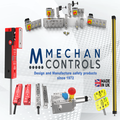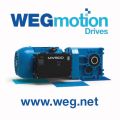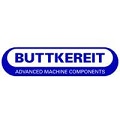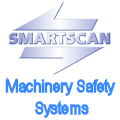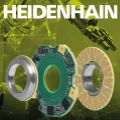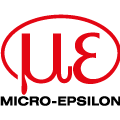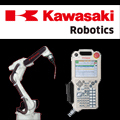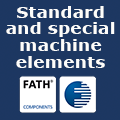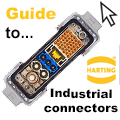
Posted to News on 21st Feb 2014, 15:12
Popularity of permanent magnet motors on the rise
The demands for improved energy savings combined with precision operation has increasingly led engineers to specify permanent magnet synchronous motors (PMSMs), which are more efficient and accurate than an induction motor and a fraction of the cost of a large servomotor. Rick Munz, IHP product manager at Regal, explores this exciting motor option.
In an induction motor the rotor becomes magnetised when power is supplied and starts rotating because of its proximity to the stator's permanent magnets which are of the same polarity. A PMSM motor, also known as a brushless AC motor, differs from this by having permanent magnets mounted in the rotor.
Typically these extra magnets are rare earth magnets as opposed to ferrite magnets. They are very powerful, which contributes to the motor's efficiency. They also help create extra output power and improve the smoothness and precision of the rotation. Unfortunately they are also expensive, which explains the greater purchase price of PMSMs compared with induction motors.
A PMSM provides rotation at a fixed speed in synchronisation with the frequency of the power source, regardless of the fluctuation of the load or line voltage. The motor runs at a fixed speed synchronous with mains frequency, at any torque up to the motor's operating limit. PMSMs are therefore suitable for high-accuracy, fixed-speed drives.
A 3-phase PMSM is a permanently excited motor. Boasting a very high power density, a very high efficiency and high response, the motor is suitable for most sophisticated applications in mechanical engineering. It also has a high overload capability. A PMSM is largely maintenance free, which ensures the most efficient operation and reduced maintenance costs.
PMSMs are not able to operate in a direct-on-line configuration, but must be used in conjunction with a suitable electronic controller, which uses current-switching to activate the motor and also to control its output torque. While the drive is another element of expense, it operates by constantly measuring the rotational position of the shaft, providing a high degree of precision control that is more akin to a servo control arrangement rather than that of an induction motor.
The advantages of a PMSM over an induction motor can be summed up as they are inherently more efficient, offer more precise speed control and higher power density. PMSMs can also operate at a reduced temperature, resulting in longer bearing and insulation life.
Advantages
PMSMs are often referred to as "synchronous machines' that is the rotor spins at exactly the same speed as the magnetic field produced by the stator windings, whereas an induction motor is asynchronous because it has some "slip' - typically between 1 per cent and 3 per cent. This synchronicity aids efficiency, dynamic performance and speed control.
Generally speaking, PMSMs provide higher flux density than comparable induction motors. This means that more power (torque) can be produced in a given physical size, an increasingly important attribute considering the desire to reduce machine/system sizes.
Another advantage of PMSMs is that they typically have a wider speed range than AC induction motors. As a general rule PMSMs are rated for 20:1 speed range without feedback (open loop) or 2000:1 closed loop (with encoder). However the drive selection also plays a part in speed range, so each situation has to be considered individually.
It should be noted that back-EMF increases directly with motor speed. The electronic components in the drive are designed for a maximum voltage above the rated voltage of the drive. Normally the motor and control are designed to operate well below the maximum voltage of the components. However if the motor speed exceeds the design speed range (either being powered from the drive or being back-driven by the load) it is possible to exceed the maximum voltage of the drive components and failures could result. Fortunately the drive is capable of controlling or "limiting" the motor's back-EMF when it is operating normally (however, if the drive fails and loses control during an over-speed condition it cannot protect itself).
PMSM motor losses are around 15-20 per cent lower than induction motors. Depending upon motor size, electricity price and duty cycle, users can therefore expect to recover the extra cost of a PMSM motor in 3-15 months.
Applications
PMSMs are suitable for a very wide range of applications - including almost any application currently serviced by an induction motor, and many where a large (very expensive) servomotor is used to achieve precision positioning or high dynamic response. In situations where the primary concern is motor efficiency, centrifugally loaded variable speed applications like fans and pumps become very attractive indeed.
In many cases replacing an induction motor with a PMSM can make the need for extra power transmission equipment, such as belts, chains or gearboxes, redundant - driving up overall system efficiency and reducing initial purchase cost, commissioning time and maintenance commitment.
PMSMs are generally designed to be direct drop in replacements for induction motors, both IEC and NEMA. This allows motor users to easily switch to modern, high-efficiency, low-maintenance and reliable alternatives and with energy prices set to increase steadily for a few years to come, many plant operators are opting to go down this route.
When specifying motors, engineers can use technical terms that often confuse non-technical people, so below is a brief explanation of the most common phrases:
Power density is simply the ratio of output power to physical size of a motor. PMSMs have a higher power density than equivalent induction motors. However, it should be noted that shape is also an issue - a long thin motor may fit where a short squat one cannot and vice versa.
Form factor is a different way of looking at power density, considering frame size rather than overall size.
Service factor is a measure of the time a PMSM can safely operate above its rated power (they can do so intermittently, but if done so for longer periods heat will build up to unacceptable levels.
To find out more about permanent magnet synchronous motors (PMSMs), visit www.rotor.co.uk.
Unit 8, 16 Everitt Close
Denington Industrial Estate
NN8 2QF
UNITED KINGDOM
+44 (0)1933 230900






